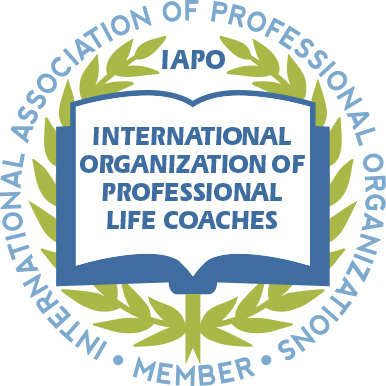Few things are as essential to success as vision and strategy. A clear vision creates an image of success that helps drive purpose and direction. A robust strategy creates the roadmap to follow to achieve desired outcomes. Together, they provide a framework that fosters alignment and helps guide teams towards efficient, appropriate and impactful action.
In our constantly changing world, it is easy to inadvertently take our eye off the ball. So now, more than ever, having a clear vision and strategy is critical to success.
Today, we describe five red flags that indicate your vision and strategy need improvement as well as six essential vision and strategy success factors.
Signs Vision and Strategy Need Improvement
Recognizing weaknesses in your vision and strategy and attending to them will improve the odds of future success. Signs that your vision and strategy require improvement include:
Lack of clarity and alignment among team members: When team members are unsure about the organization’s overarching goals, it creates confusion. This uncertainty can cause miscommunication and conflicting priorities. Without a shared understanding, individuals may have different views of what success looks like. This can lead to inefficiency and competing efforts.
Inconsistent Decision-Making: Decisions are made impulsively or based on short-term gains rather than aligning with a long-term vision. Team members may struggle to prioritize tasks and initiatives.
Low Morale and Engagement or Increased Turnover: Without a clear vision to work towards, team members may feel disengaged or demotivated. They may not see how their individual contributions connect to the bigger picture. This can result in a lack of enthusiasm for their work.
Duplication of Efforts or Siloed Work: Team members may work in silos, unaware of what others are doing or how their work contributes to the overall team goals. This can lead to duplication of efforts, inefficiencies, and a lack of collaboration.
Poor Performance: Without a clear strategy, team members may struggle to meet deadlines or deliver results consistently. The absence of a roadmap can make it challenging to stay on track, monitor performance, and achieve desired outcomes.
Identifying these signs early can help leaders mitigate risks to organization performance and employee engagement before it’s too late.
If you are seeing any of the warning signs described, it’s imperative to strengthen your vision and strategy to preserve employee morale and organizational success.
Why Vision and Strategy Work is Essential
Developing a shared vision and strategy leads to increased clarity, engagement, and resilience.
When we become aware of the signs, it’s imperative to take proactive steps towards improvement. To define and communicate a more compelling vision. To focus on refining a strategy that inspires, while aligning and guiding others towards shared goals.
But where to begin?
Developing a vision and strategy can be complicated. There are many possible approaches and strategic planning models to choose from. Some or all of them may work well for you and your team.
How to Develop a Shared Vision and Strategy for Your Team
Choosing the right framework is less important than observing six essential success factors that increase the odds for an effective vision and strategy process.
Whatever model you choose to use, keep these six guiding principles in mind to set your team up for success.
1. Your Vision and Strategy Must Align with Organizational Goals
When you align your team’s vision and strategy with that of the broader organization, you ensure that everyone is working towards shared goals and that understands how their efforts contribute to success.
Understanding how your team’s objectives contribute to the overall success of the organization is key to a cohesive and integrated vision. Drawing direct connections for staff is key to ensure alignment and motivation.
One way to achieve this is by explicitly linking individual tasks and projects to broader organizational objectives.

Examples of how to do this include:
- In a sales team, leaders can connect the daily sales targets of each sales representative to the company’s revenue goals. This demonstrates to the staff how their efforts directly contribute to the overall success of the organization.
- Share success stories or case studies of how a team’s work positively impacted the company’s mission. This can inspire and illustrate the significance of individual contributions.
- Provide regular updates on the progress towards organizational goals. Recognize the specific efforts that have contributed to that progress to reinforce the link between staff activities and overarching objectives.
- Involve staff in goal-setting and decision-making processes to further underscore their connection to the organization’s strategic direction. This also fosters a sense of ownership and purpose among the team.
2. Take An Inclusive and Collaborative Approach
You often hear of senior leaders engaging in off-sites devoted to organizational strategy. The fundamental flaw in this approach is that it does not allow for sufficient participation from other levels of the organization.
In fact, developing a shared vision and strategy absolutely requires an inclusive and collaborative approach that involves input from all levels of the team.
The way to do it right?
Conduct focus groups, workshops and surveys. Involve designated staff leaders in dedicated working session to review the findings. Encourage open dialogue and active participation. Collect diverse perspectives to ensure that the vision and strategy reflect the collective aspirations and insights of the team.
There are other benefits from involving team members to participate in the strategic planning process.
By doing so, we foster a sense of ownership, commitment, and buy-in for a shared vision and strategy.
Moreover, involving employees in the co-creation of the vision can lead to a more comprehensive and representative strategic direction and improved communication of the vision and strategy throughout the organization.
By fostering an inclusive approach, organizations can leverage the collective wisdom and creativity of their diverse workforce, leading to more robust and relevant visions and strategies that resonate with all stakeholders.
3. Communicate Widely and Well
Ensuring that an organization’s strategy is communicated widely and effectively is essential for alignment and understanding across all levels. We must communicate strategy in a way that is accessible, understandable, and relatable to all team members.
One approach is to use multiple communication channels to reach a diverse audience, such as town hall meetings, email updates, intranet platforms, and visual displays in common areas.
Other options you may consider include:
- Use storytelling and real-life examples to make the strategy more relatable and engaging for employees. For instance, create case studies or success stories that highlight how the strategy has positively impacted specific projects or departments.
- Provide regular progress updates and transparent communications about how the strategy is being implemented and its impact on the organization’s goals. This can help reinforce its importance and relevance.
- Encourage two-way communication, allowing for employees to ask questions, provide feedback, and share their own experiences related to the strategy.
By using a combination of diverse communication channels, relatable storytelling, transparency, and open dialogue, organizations ensure that their strategy is not only disseminated widely but also well understood and embraced by all stakeholders.
4. Define Key Objectives and Measures of Success
Once a shared vision is established, it is essential to define clear and measurable objectives that align with it.
Identify key milestones, performance indicators, and success metrics that will enable the team to track progress and see the impact of their efforts. Basic examples include revenue growth, staff retention, customer satisfaction, or new clients.
These metrics should be easily measurable, specific, and relevant to many within the organization.
Additionally, communicate the rationale behind each metric and how its achievement contributes to the broader vision and success of the organization.
It’s equally important to identify and track potential risks to a strategy and any actions taken to mitigate those risks.
Provide regular updates on performance and public recognition of achievements to further reinforce the connection between individual efforts and organizational goals.
When we link key metrics for success to the organization’s vision in a transparent and understandable manner, employees better grasp how their contributions impact success. This fosters a shared understanding and commitment to the common vision.
5. Be Flexible and Adaptable
External factors and internal capabilities may evolve over time. To remain relevant, our vision and strategy must be flexible and adaptable.
Feedback mechanisms and adaptability checkpoints can help.
Periodically review your strategy and adjust it, if necessary. Factors to monitor include emerging trends, new competition or internal shifts. For example, a retail company may review its strategy each quarter to assess the impact of new products in the market or other competitive advancements.
When we regularly evaluate our strategy’s effectiveness, we are better able to adjust to evolving circumstances.
A culture that values innovation, experimentation, and continuous learning can help foster flexibility, too. Encourage employees to share insights, ideas, and suggestions for improvement.
By integrating feedback loops, adaptability checkpoints, and a culture of innovation, organizations we ensure that our vision and strategy remain dynamic and flexible.
6. Foster Empowerment and Accountability
Provide team members the autonomy and resources to contribute meaningfully towards the achievement of strategic goals.
This can be achieved by delegating decision-making authority, providing professional development opportunities, and recognizing each person’s contributions to the overall vision.
As noted above, establishing clear expectations, milestones, and key performance indicators (KPIs) can also help create a sense of accountability. This enables all to track their progress and take ownership of their responsibilities.
Additionally, fostering a culture of open communication and collaboration empowers employees to voice their ideas, concerns, and feedback.
Combining empowerment with clear accountability mechanisms helps to foster a motivated and engaged workforce.
Vision and Strategy: How to Empower Your Team for Success
Developing a shared vision and strategy for your team is a critical step towards fostering alignment, motivation, and success.
If you notice any of the red flags described above, you may need to focus more attention on providing a clear framework to your team.
Nurture your team and provide the foundation for a successful strategic planning process. This focus can help you to cultivate a sense of purpose, direction, and collaboration that will enable your team to work towards common goals with clarity and confidence.
Investing time and effort in building a shared vision and strategy can lead to increased engagement, resilience, and performance.
Want to learn more about a potential career challenge? Check out: How to Become a Board Member: Expand Your Impact Now.
Thank you as always for reading.
If you haven’t yet subscribed, please visit Kind Compass Coach and enter your email address so you never miss a post.
As Amazon Associates, we may receive a small commission (at no cost to you) for items purchased through links in this post.

Joan Senio is the founder of KindCompassCoach. Her career includes 20+ years as a private sector corporate executive and 15 years as a consultant. The common thread through her professional life has been a commitment to compassionate coaching and leadership, including mentoring early and mid-career professionals as well as current and future executives and leaders. KindCompassCoach articles are backed by research and include facts and advice from relevant experts. Joan is a member of the International Organization of Life Coaches, serves as a thought-leader for KuelLife.com and is a regular contributor to PsychReg and Sixty and Me.
Discover more from KINDCOMPASSCOACH LIFE COACHING
Subscribe to get the latest posts sent to your email.






No Responses